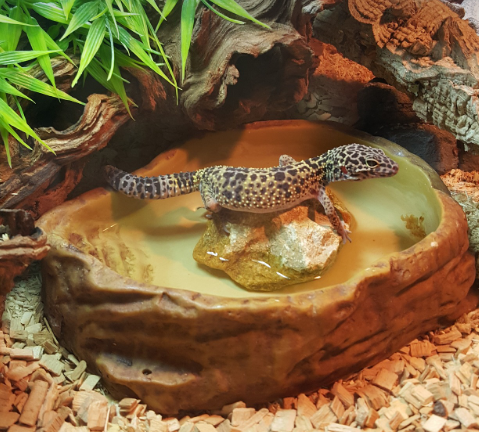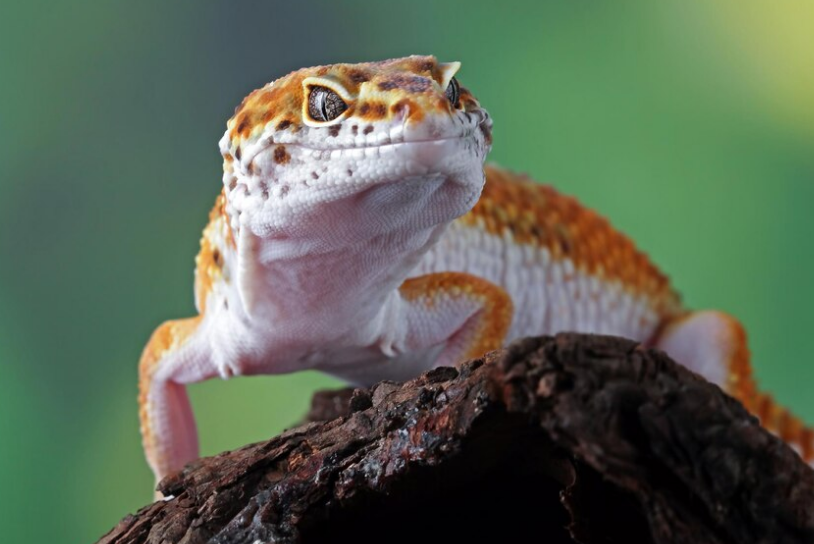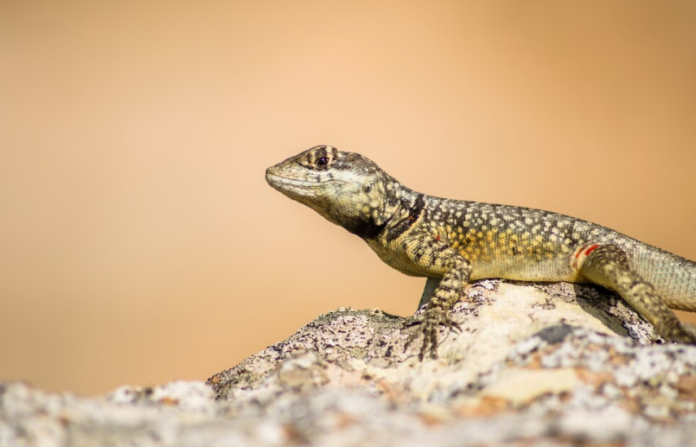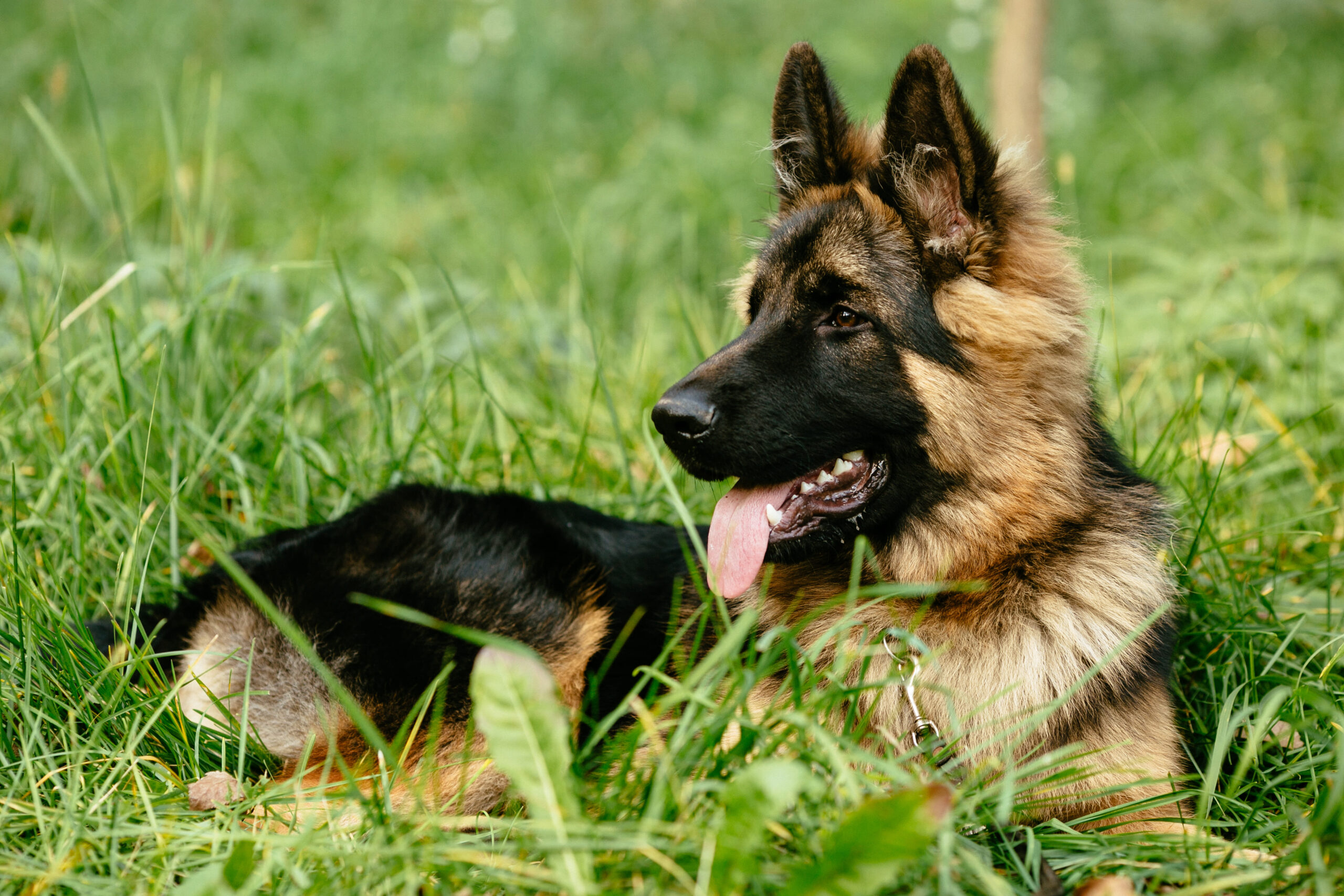Leopard geckos are much in demand as pets because of their friendly attitude. In addition, these reptiles don’t require too much attention and care which makes them easy to handle. Nevertheless, you must know about them if you’re considering petting one. This article will talk about how long do leopard geckos live, how they should be maintained, and what diseases can turn fatal for them.
Although studies have found that leopard geckos who are petted can live longer than the ones on their own, it is seen that improper care and a hostile environment results in their death sooner. That’s why you must ensure that you can give in time and care for your little fella if you wish to pet it.
On average, leopard geckos live for about twelve to twenty years (in the wild) and fifteen to twenty years (in captivity). This article discusses the factors that affect their lifespan, health, and behavior.
How Long Do Leopard Geckos Live?
A leopard gecko can live for up to 12 to 20 years on its own in the wild habitat. Whereas, if petted, they can survive for 15 to 20 years, provided that they get proper care.
Leopard Geckos Life Stages
| S. NO. | CATEGORY | AGE | SIZE | WEIGHT |
| 1 | Hatchlings | 0-2 months | 1.4-2 inches | 2-5 grams |
| 2 | Juveniles | 2-7 months | 5 inches | 15-25 grams |
| 3 | Adult | 12 months and above | 7-11 inches | 60-80 grams |
How Long Do Leopard Geckos Live: Based On Environment
| S. NO. | ENVIRONMENT | LIFESPAN |
|---|---|---|
| 1 | In Wild | 6 to 8 Years |
| 2 | In Captivity/As Pet | 10 to 20 Years |
How Long Do Leopard Geckos Live: Based On Gender
| S. NO. | GENDER | LIFESPAN |
| 1 | Male | 15 to 20 Years |
| 2 | Female | 10 to 15 Years |
However, how long do leopard geckos live depends on certain factors that we’re about to discuss. Having detailed insights about these factors will help you provide these scaly friends with a better environment and care to live in.
1) Habitat
Natively found in northwest India, Afghanistan, and Pakistan, leopard geckos are terrestrial creatures. Hence, they love living in semi-arid habitats. They are also found in arid regions of Nepal and Iran.
Generally, these reptile species adore open areas, which is the reason you must invest in a 10 to 15-gallon or even larger tank for housing one or two leopard geckos. This is so because they can grow 15 to 25 cm in size.
If you’ve ever petted a fish, you can also use the fish tank of appropriate size (without water). Furthermore, adding stones to the tank will further increase their interest in physical activities. But mind that the stones shouldn’t be heated stones as they can cause burns to these reptiles. Moreover, use a heavy-weight ventilated cover to enclose the tank.

Talking of habitat, cleanliness is a must. Clean the cage daily and give proper disinfectant treatment to it every month by switching the substrate. Scrubbing is suggested to keep the bacterial build-up at bay.
In comparison to the wild habitat, leopard geckos can be kept safe in captivity. Otherwise, they have to deal with their predators which include large birds, mammals, cobras, and other snakes.
2) Cleaning
There are 3 methods to clean a leopard gecko’s tank:
(i) Cleaning A New Cage
Before giving your gecko its home, you need to disinfect it properly.
So be ready with hot water and wear latex gloves to begin. First, scrub the tank with dish soap and let it dry. Then apply a reptile-friendly disinfectant and leave it on for half an hour then rinse the tank a couple of times with water. Similarly, wash and cleanse every object you’re going to put into the tank.
(ii) Spot Cleaning (Daily)
To clean your leo’s tank, you need to shift it to a separate tank and then remove every single item (including substrate) placed in the first tank. It’s better to wear latex gloves during this process otherwise you might get infected. Using a paper towel, remove any leftover food and feces from your gecko. This should be done regularly.
(iii) Deep Cleaning
Your leo’s tank will require deep cleaning every few months. So wearing latex gloves, follow the same process that you used while cleaning the new cage. While you clean your gecko’s home, put it into a plastic container that comes with a tight-fitted cover with ventilation holes.
NOTE:
- Cleaning keeps bacterial infections at bay and adds years to how long do leopard geckos love.
- Wear latex gloves while cleaning the tank.
- Don’t forget to wash your hands before and after cleaning.
3) Substrate
There is a lot of debate about what kind of substrate works best for leopard geckos. Some hold the view that sand substrates are not good for geckos and can irritate their skin. Whereas, others believe certain kinds of sand substrates such as biotic and clay can provide a natural habitat for them. Slate rock bedding with soil is also typically used for geckos, but optimum care is needed to ensure that they don’t ingest it. However, reptile beds and tiles are also considered the perfect base for geckos’ homes and can work better than paper towels.
Moreover, wildlife biologists suggest tile flooring with loose substrate soil is a good option because even if ingested loose substrate soil can reportedly pass out from their body easily. You must research and seek the opinion of someone experienced or a vet. Whichever alternative you decide to go for, make sure to serve the food in a separate small dish to keep the geckos from ingesting carpet threads or sand. Also, be prepared with an additional carpet/bedding swap for cleaning purposes.
4) Cleaning
Maintenance and cleaning of substrate depends on what you’re using. Paper towels should be changed daily or after every 3 to 4 days. On the other hand, soil should be rinsed with hot water several times and a water conditioner should be used in the last round to wipe off chlorine and heavy metals. Afterward, spread the wet soil on a wide-base flat container and let it dry under the sunlight or in the microwave (if using a microwave-friendly container).
NOTE: Don’t use the same container in which you dry out soil for eating or keeping food. Clean it with dish soap and a separate sponge and use it for soil rinsing in the future.
5) Lighting
Although there is no need for light during the day if the cage of your leopard gecko is going to sit in your room, a blue light can be placed in it for avoiding deficiency of Vitamin D. A purple or red light is an ideal choice for the night because these reptiles love to play during the night. Along with that, you’ll require a temperature controller for the tank of your gecko so it can feel like home. Ideal temperature settings for a geck would be between 85 to 88 degrees during the daytime and between 70 to 75 degrees at night.
Although leopard geckos are nocturnal animals active at night, they need Vitamin D in adequate quantity. You can put fake UV/sunlight sources to help in any season. They reportedly need 14 hours of sunlight in summer and 12 hours in winter. Otherwise, it can develop problems in bones and affect how long do leopard geckos live.
6) Humidity

Another important thing to take care of is the level of humidity in the tank. The level should be set at 30 to 40 percent and monitored using a hygrometer. However, humidity level needs to be higher when your leo is shedding (scroll down to know more).
7) Diet
Food intake affects how long do leopard geckos live significantly. Geckos who are petted usually munch on store-bought food tend to live longer than those in the wild. A simple reason for this is store-bought insects are raised in controlled environments, unlike the ones in the wild. This reduces the chances of developing infections.
Typical diets of leopard geckos include invertebrates such as lobsters, snails, spiders, mealworms, crickets, etc. Nonetheless, they also munch on mouse pinkies, small reptiles and even hatching geckos. If you’re petting more than one gecko, ensure both are fed properly otherwise they won’t shy away from attacking and eating each other (this is referred to as cannibalistic behavior).
Moreover, the worms or whichever meal you’re opting for must be sprinkled with calcium or vitamin D3 supplements. You can use a ziplock bag for evenly distributing the supplements on every single worm. Adult geckos can be fed supplements alternatively while baby geckos need it with every feed.
How Often To Feed Leopard Geckos?
For how often you should feed your leo, remember it depends on their growth and health:
- A growing leopard gecko (younger than 1 year) should be fed daily. On the other hand, an adult one should be fed on alternate days or twice a week.
- Quantity: a few worms (5-6 for younger ones; 6-8 for adults).
- If your leo is not in the pink of health, feed it once a day until it recovers completely.
- The ideal time for serving these little spotted reptiles is late in the day (around brunch time) and early in the evening because they usually go hunting at that time in their natural habitat.
- In case your gecko throws tantrums while eating, take it to a vet for a check-up. Possible reasons for such behavior can be irregularities in tank temperatures, sickness, vision problems, etc. Only a vet can tell you the actual reason after the check-up.
8) Water
A shallow bowl filled with water must be present in the gecko’s home at all times. It’ll help keep them hydrated whenever they feel thirsty and don’t worry if you see your little friend soaking itself in the water dish occasionally.
9) Personal Hygiene
When it comes to the personal hygiene of your leopard gecko, a warm bath in lukewarm water is what it needs every week. You can also give it a bath twice a week. Just ensure your friendly pet sits in the lukewarm water for about 15 minutes. If your gecko is shedding, give it a bath every day, it’ll make the process easier.
10) Shedding
Leopard geckos go through the phase of shedding as they grow, generally, once in every 1 to 2 months. It is an inevitable and essential process that assists them in getting new skin. Moreover, shedding helps leos in keeping skin and bacterial infections at bay, otherwise, they can get infected.
However, there can be times when your leo can’t shed properly. For instance, they can retain old eye caps due to improper shedding which can turn them infected or even blind. Similarly, if the skin on their fingers and toes doesn’t shed as required, their mobility gets affected.
There can be multiple reasons for improper shedding in your leo, the topmost is inadequate humidity levels. High humidity levels can assist these little reptiles to shed easily. You can place a shallow-base water dish in your gecko’s cage to help. In addition, a vitamin-rich diet also works like wonder by allowing leopard geckos to develop healthy skin.
Improper shedding or no shedding at all can be a serious problem and might have an adverse effect on how long do leopard geckos live. That’s why you must consult a vet.
11) Stress
Although they are cute and won’t mind a person touching them, these tiny creatures tend to attack if they feel threatened. Did you know that a leopard gecko tends to lift its tail if it senses a predator? Well, now you do! These reptiles can get stressed when the environment around them becomes hostile, they sense a threat or consume something harmful.
Also, female leopard geckos face more stressful situations than that of a male because they can lay eggs without mating. However, those eggs don’t get fertilized. In the process of repeated breeding, they get stressed and their lifespan shortens.
12) Tail Drop
The fat stored in a leopard gecko’s tail helps them feel nourished when they are not fed.
Tail drop occurs when leos detach their tail voluntarily to distract their predator/sensed threat and escape. A gecko’s tail can rattle for 30 minutes after detachment and they usually come back to eat it to gain the stored fat in it. This phase gives geckos enormous stress and can affect how long do leopard geckos live. Their new tail grows after some time but it never gets as tall as it was.
Leopard Geckos Behavior
So far we’ve discussed factors that can affect how long do leopard geckos live. We’ve also talked about changes in their behavior concerning their environment, feed, stress, etc. The below-stated points will help you further analyze what your gecko wants:
- Leopard geckos (especially younger ones) cry and whine if they feel hungry.
- They rattle their tail just like rattlesnakes if they feel excited or want food or mating.
- These reptiles drop their tail if they feel unsafe. This self-amputation can also happen if unhealthy or ill-treated. They might return later to eat the tail because it stores fat that converts into energy when they are unfed.
- Leos can go through the phases of high stress if they’re ill-treated, unhealthy or tired.
- They can easily get infected if their habitat isn’t cleaned and disinfected.
- Geckos can be pretty concerned about adjusting to new owners. That’s why learn to handle your gecko with patience, hold it in your hand, and talk with it so that it can get familiar with your voice.
- They love to munch on wax worms. However, you must not feed them that in plenty otherwise they can gain weight and face health issues. Once or twice a week is enough to give your little pet this treat.
- Geckos enjoy passing through obstacles, climbing trees, finding objects, and playing with paper towel balls.
Leopard Geckos Diseases
Certain health problems can alter how long do leopard geckos live.

If left untreated these issues can be the cause of their death. That’s why you should immediately consult a vet for a check-up and start treatment if you notice signs of the below-discussed illness in your leos:
- Metabolic Bone Disease: Vitamin D deficiency is quite common in leopard geckos. It can cause spine deformities and obstruct their movement which is why vitamin D3 supplements should be evenly sprinkled over their feed. The major cause of this disease is an unbalanced diet. To fix this a vet can also suggest using splints and castings.
- Armpit Bubbles: This situation arises when your gecko is gaining excess weight. The excess nutrients, vitamins, and sometimes fat accumulate in the form of tiny sacs under their arms. Although these bubbles don’t cause any pain or inconvenience to geckos, they should be fed less and without supplements. Furthermore, you should not try to pop these bubbles because they’ll disappear with time.
- Gastroenteritis: If your leo is passing watery stool or blood in stool, this can be due to gastroenteritis. It occurs due to a bacterial infection and is serious if left untreated. This disease is contagious so if you’re petting more than one gecko, make sure to provide them different spaces until the disease is treated.
- Respiratory Problems: Leopard geckos are prone to respiratory problems due to infections. They will wheeze or you can notice the build-up of mucus around their nose and mouth if they are facing any such issues. In this situation, a professional vet can help.
- Loss Of Appetite: Loss of appetite shouldn’t be ignored in the case of leopard geckos because it can affect how long do leopard geckos live. If they do so, it means they have either developed a health problem or are going through a stressful phase, both must be treated well in time. In such a case, a vet should be consulted as soon as possible, otherwise, it can turn fatal.
- Dysecdysis: This is a condition where the geckos have difficulty in shedding. It can arise due to low humidity levels and cause vision and hearing impairments on leos. To help your little friendly reptile recover you can place a shallow-base water dish in the gecko’s tank.
Frequently Asked Questions (FAQs)
#1 Why Are Leopard Geckos Considered A Good Pet?
Leopard geckos are highly friendly, one of the only reptile species that can be petted, and require low maintenance. This makes them considerably lovable pets.
#2 How Long Do Leopard Geckos Live?
On average, leopard geckos can live for 12 to 20 years in the wild habitat and for about 15 to 20 years in captivity. However, their lifespan depends on several factors including their diet, medical care, stress, etc.
#3 Male Or Female Leopard Geckos: Who Lives Longer?
As per wildlife biologists, male leopard geckos usually live longer than females. This is so because female geckos go through enormous stress as they lay eggs repeatedly even without mating.
#4 How Long Do Leopard Geckos Live Without Food?
Adult leopard geckos can survive for 10 to 14 days in absence of food.
#5 What Are The Signs Of Death In Leopard Geckos?
Leopard geckos can lose their appetite due to fatal sickness that can end their life. Moreover, they will stop mobility and show tiredness. Stress and a chronic disease can also contribute to their death.
Wrapping Up
Leopard geckos are the most common reptile species that people love to pet. They exhibit interesting characteristics and must be handled with care. Furthermore, their diet, cleanliness, habitat, etc. must be monitored well. The above article has aimed to provide detailed insights on how long do leopard geckos live, factors that can affect their lifespan, and common diseases they are prone to.
Also Read:





